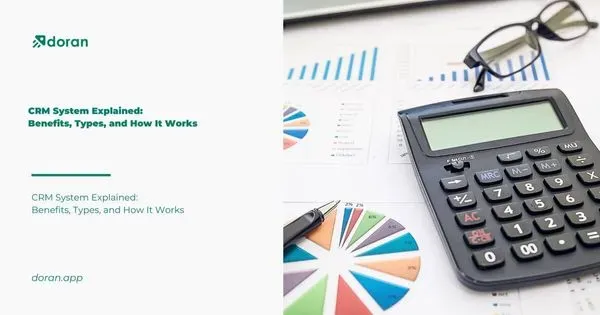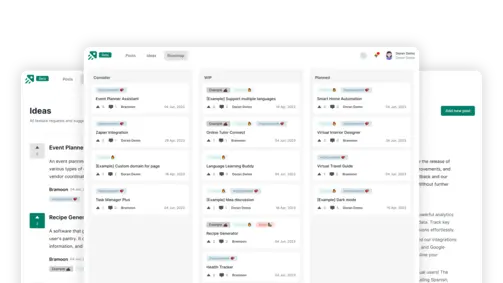Decoding Success: a Deep Dive into Strategy Roadmap Examples
Create changelog and product roadmap for your product
Explore nowTable of contents 7 min
In business strategy, a well-crafted roadmap serves as the guiding compass for organizations. This article delves into the intricacies of strategic planning through illuminating strategy roadmap examples. By dissecting these real-world cases, we uncover the methodologies, decision-making processes, and successful implementations that underpin strategic roadmaps. Whether you’re a business leader, entrepreneur, or strategist, this exploration of strategy roadmap examples offers a unique lens into strategic planning and execution, providing valuable lessons for your own strategic endeavours.
What Makes Roadmapping Crucial?

It is essential to understand why every business needs a roadmap before diving in straight to some of our strategy roadmap examples.
Creating a roadmap is essential to your strategic planning because it outlines the process by which your team will turn your ideas for products into reality. Having a well-crafted roadmap can also aid in maintaining team focus. In the midst of a high-intensity endeavor, the ideal outcome can be quite inspiring.
The roadmap is visible to all stakeholders, including development, marketing, and higher management. It is subject to modification in response to evolving product requirements. Your team may be able to better grasp your judgements and your reasoning by looking at your map.
The most important lesson from this is that roadmaps outline your goals and the path to achieving them. They can increase staff involvement by establishing important common objectives. Furthermore, they can persuade doubtful or prospective investors that investing in your business is a wise choice. To keep your word, simply adhere to your map.
Read more: Mapping the Journey: Practical Examples of Roadmaps for Project Success
What Ought to be on a Roadmap?
The following elements are crucial to our strategy roadmap examples:
-
Vision: The desired impact of your product on your target market and how it will enhance the end user’s daily life should be covered in your roadmap.
-
Approach: The actions that act as your main development elements make up your plan. It outlines the requirements for a successful launch, sets targets for your team to work towards, and makes a suggestion about the product’s possible financial gains.
-
Requirements: Your requirements translate what customers want, need, and have to say into what your product requires to succeed. You can determine these criteria with the assistance of your sales and marketing staff. Customers can also be spoken with directly! Two easy methods to get in touch are email surveys and online communities.
-
An overarching plan: To realize your goal, your team must attain these x points. Presenting them in the right order is just as crucial as the information itself. After all, how can you ever reach your destination if you start walking in the wrong direction?
-
Metrics: A roadmap should include desired long-term metric goals and pertinent, current, real-world facts. You can use these numbers to assess the product’s success—or lack thereof—and identify features that should be added, modified, or dropped.
Errors to Stay Clear of When Creating a Roadmap

Because roadmaps are so important, errors or poorly written text can quickly stop progress. Avoid this trap by learning about the typical mistakes with product roadmaps listed below.
Not Making Your Plan Thoroughly and in Detail
When you’re drafting your roadmap, the concepts you include could seem like common sense. However, the human mind is unpredictable, so even if you understand your concepts thoroughly now, you cannot recall them afterwards. And that’s unfortunate since, during the development process, you and your team will consult the roadmap frequently. So now explain the rationale behind your strategic objectives. That way, your roadmap continues to be a useful instrument for promoting more productive development.
Excluding Evidence Supporting Your Plan
Setting objectives and providing justification for them on the roadmap is a great start. Still, you’ll also need to provide evidence for your conclusion. After all, developing confidence in your work is one of the main goals of creating a roadmap. Stakeholders may be able to discern your motivations, but motivations are not the same as proof of possible success.
Putting Detailed Dates on Your Roadmap
It is never a given that your team will adhere strictly to your roadmap. Maps are too general and flexible for that! Priorities and resources can change frequently throughout the normal development cycle, and establishing strict deadlines hinders your team’s flexibility. Therefore, if you include dates in your roadmap, ensure they are flexible enough to account for unanticipated events. More flexibility is available with a Q4 aim than with an exact date.
Not Taking into Consideration What the Roadmap Leaves out
An effective roadmap is sufficiently appealing and clear to hold someone’s interest. Yet, if a paper is very dense with details, it may be unavoidable that you will lose attention. Some product features or services will unavoidably need to be removed to keep things clear.
However, completely ignoring these objects is not a good idea because someone might wonder why you left off a specific item. Therefore, you should proactively clarify why particular items were excluded. Although it won’t satisfy everyone, it does demonstrate that each issue was fairly considered. In general, meetings will be better as a result.
Find out more: 5 best recommended tools for roadmap
Strategy Roadmap Examples

Kanban Roadmap
The first name in our list of strategy roadmap examples is called Kanban roadmap.
One delivery-focused roadmap for development teams is the Kanban roadmap. Product teams can use it to organize efforts more effectively by classifying them into categories like planned, in-progress, finished, and backlogged tasks.
One of its biggest benefits is that a Kanban roadmap enables product teams to discuss their short-term goals without setting deadlines. By reminding your delivery team of the goals they are working toward, you can keep them motivated and demonstrate when you are working on particular features.
Features Timeline Roadmap
Next up in our list of strategy roadmap examples is the features timeline roadmap
You can specify the duration for a single feature with an output-driven roadmap called a Features Timeline Roadmap. If you want to see a 1000-foot view of how work is moving toward a deadline or time-bound milestone, planning features and monitoring progress with a timeline roadmap is excellent. You can coordinate internally with development teams on precise dates and monitor feature progress in relation to predetermined deadlines and milestones. Additionally, you can assign resources to where and when they are needed.
Objectives Timeline Roadmap
Senior executives and stakeholders eventually desire a more zoomed-out perspective, especially for larger businesses and those operating in more complex situations. A roadmap that is output-driven rather than outcome-driven is a goals timeline roadmap. This roadmap provides a broad organizational alignment on product direction. Anyone may easily comprehend how each of our business goals will be worked toward and where they fall about your most important accomplishments.
Timeline roadmaps with objectives are an excellent way to share your product strategy and goals with teams over the upcoming two to three quarters. This provides a clear link between your product, business strategy, and final deliverables, such as features, when you use business-level objectives.
Strategy roadmap examples are not just case studies but windows into the strategic thinking and execution that drive organizational success. As we conclude this exploration, remember that strategic planning involves a dynamic interplay of vision, adaptability, and effective execution. Let the lessons from these examples inspire your strategic endeavors, guiding you toward innovation, growth, and sustained success in an ever-evolving business landscape.
What to not miss out on our blog
Gain insightful knowledge and invaluable experiences from dedicated experts.

CRM System Explained: Benefits, Types, and How It Works
Discover everything about CRM system. Learn the benefits and how a CRM system works to improve customer relationships and streamline business operations.

Are you ready? Start your free trial today.
Enhance communication, keep track of the progress, understand customers' insight and more by taking your first trial on Doran.
Sign up for free

